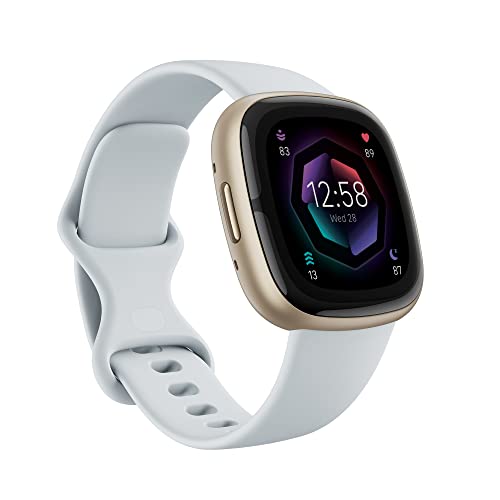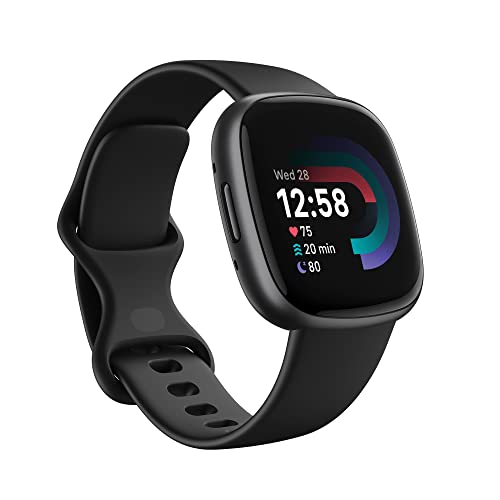Fitbit Sense 2 vs Versa 4: I tried them both - here are the 3 key features that set them apart
Weighing up the Fitbit Sense 2 vs Versa 4? Here's how these two premium fitness trackers stack up
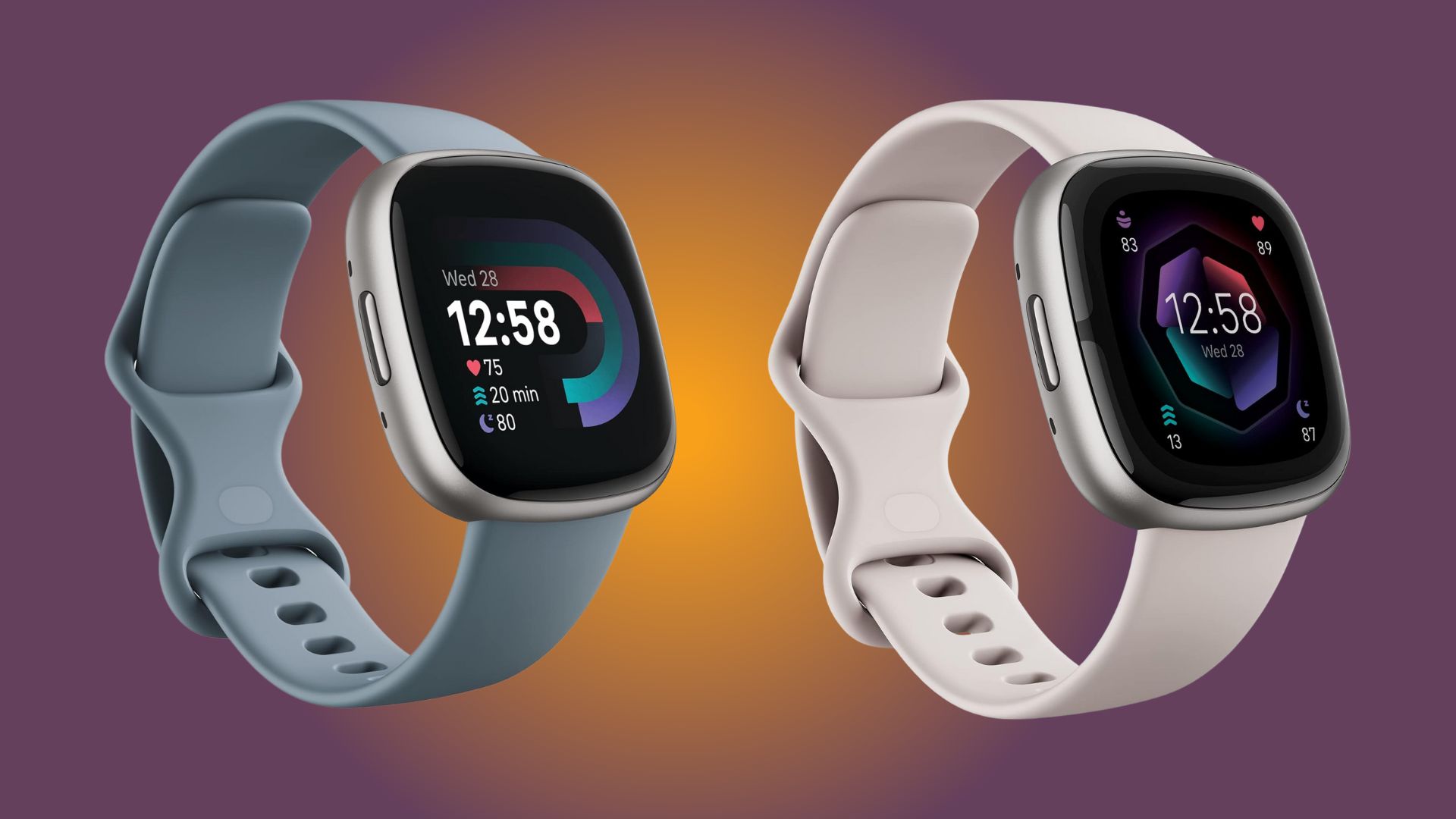

The Fitbit Sense 2 and Versa 4 are two of the most popular devices from Fitbit. They look fairly similar - but work quite differently - so you might be stuck choosing between them if you want to upgrade your fitness tracker in 2025.
As a health editor at woman&home and a fan of the best Fitbits, I've tried and tested every device on sale over the years. They are among the best fitness trackers overall, balancing premium lifestyle features and excellent health monitoring at a reasonable price point.
The Fitbit Sense 2 and Versa 4 are premium devices designed to help you monitor your overall health and wellbeing while blending in day-to-day. While they are very similar in many ways, there are some key differences worth noting.
Fitbit Sense 2 vs Versa 4
Specifications
| Header Cell - Column 0 | Fitbit Sense 2 | Fitbit Versa 4 |
|---|---|---|
Size | 1.5" l x 1.5" w x 0.45" h | 1.5" l x 1.5" w x 0.45" h |
Display size | 1.58 inches | 1.58 inches |
Full colour display | Yes | Yes |
Battery life | 6+ days | 6+ days |
Charging time | 2 hours | 2 hours |
Waterproof | Water resistant up to 50m | Water resistant up to 50m |
Key features | Built-in GPS, compass, blood oxygen levels, temperature sensing, ECG, barometer, gyroscope | Built-in GPS, compass, blood oxygen levels, barometer, gyroscope |
Colours available | Grey, white, blue mist | Black, blue, pink, red |
Extras | Fitbit Premium 6 month free trial | Fitbit Premium 6 month free trial |
Fitbit Sense 2 vs Versa 4: An overview
The Fitbit Sense 2 and Versa 4 are designed to bridge the gap between fitness tracker and smartwatch. The devices will record steps, workouts, sleep duration and quality, stress, and offer detailed insights into your overall wellbeing, while also serving as an on-wrist assistant. You can view text and call notifications, take incoming calls if you're a Google phone user, set alarms, pay contactless, and get turn-by-turn directions with Google Maps.
You can't go wrong with either device. The focus of each device is the core difference. The Sense 2 is a health and wellness tracker that focuses on holistic wellbeing through four pillars - improved sleep, reduced stress, more exercise, and more daily movement. The Versa 4 has many of the same relaxation tools with sleep and stress insights, but it prioritises fitness, with workout modes available in one easy swipe.
As they are no longer the newest Fitbit models - that title goes to the Fitbit Charge 6 - they have been reduced in price this year. However, the Sense 2 is more expensive than the Versa 4, by as much as £50 in some cases, so it's worth weighing up the Fitbit Sense 2 vs Versa 4 before making a final decision.
Design
As you may have noticed, these two smartwatches are almost identical. When put side-by-side, it's tough to tell them apart. The Fitbit Sense 2 and Fitbit Versa 4 have a square face with a metallic casing measuring 40.5mm (Sense 2) and 40.4mm (Versa 4) around a full-colour, bright AMOLED display.
Sign up to our free daily email for the latest royal and entertainment news, interesting opinion, expert advice on styling and beauty trends, and no-nonsense guides to the health and wellness questions you want answered.
On the side of both watches is a tactile button used with the touchscreens to bring the screen to life, navigate the features, and turn it off when needed. In reviewing these watches, I initially found that the Versa 4's screen sensors are slightly more sensitive than the other, as it was easier to flick the screen on/off with a flick of the wrist. This is a useful feature during the day, but luckily, you can turn it on and off. It's not so useful at night when the display accidentally flicks on, waking you (me) up.
Both devices, much like every other type of Fitbit, offer a water resistance of up to 50m.
The home screens are slightly different, too. The Versa 4 displays heart rate, activity minutes, and sleep time, while the Sense 2 brings up heart rate, calorie burn, sleep time, and activity minutes. Otherwise, the available colourways are the only key design difference. Both have a metallic casing and interchangeable silicone 'Infinity' wristbands, but the Fitbit Sense 2 offers muted palettes in black, grey, and blue mist, while the Versa 4 brings a higher-energy palette in a brighter blue, pink, or red.
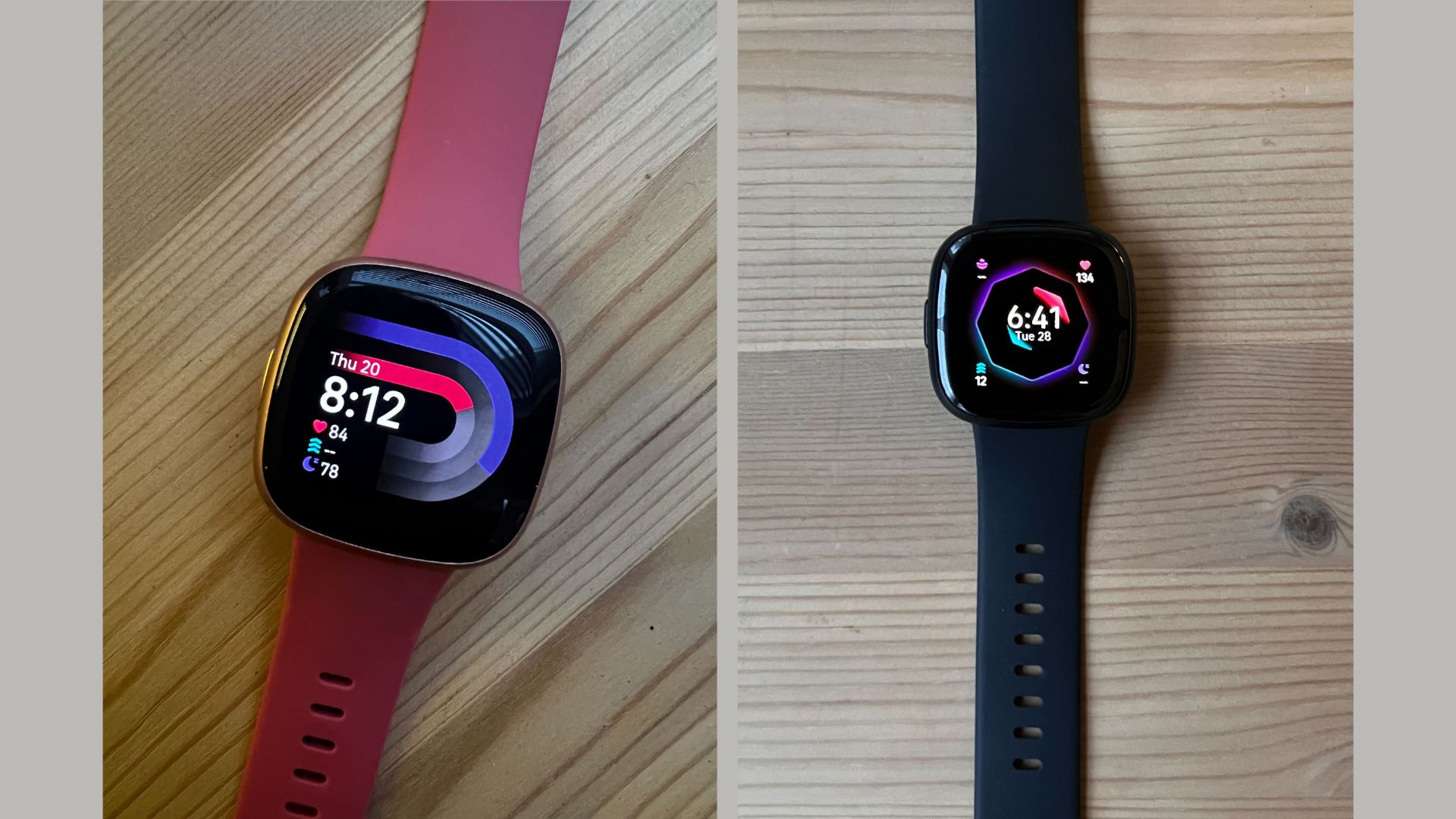
The Versa 4 (left) and Sense 2 (right) look almost identical.
Fitness tracking on the Sense 2 vs Versa 4
Whether you're looking to foster a healthy exercise habit or try something new, there's not a lot of competition when it comes to tracking your fitness on the Fitbit Sense 2 vs Versa 4. You can track your steps, heart rate, predicted calorie burn, and over 40 different workout types (anything from walking and kayaking to Pilates and strength training) on both devices. All of these modes are available with a swipe of your finger on the touchscreen, making them accessible while you're on the move. If you forget to start a workout manually, don't worry, the watches will automatically detect cycling, walking, and running activities.
With every Fitbit, during cardio workouts, you'll get a live heart rate zone and description of that zone. For example, if you're moving in zone 2, then you're in the 'fat burning' zone. For those unfamiliar with fitness lingo or new to exercise, this makes the Fitbit Versa 4 or Sense 2 a particularly useful device.
Both watches also have built-in GPS, so you could leave your phone at home when out for a run and still record your distance and route. But as neither integrates with music services like Spotify, I had to take it with me anyway to listen to my playlist.
However, I did find that the GPS on the Sense 2 was more accurate and connected faster. When testing the Versa 4, there were a couple of occasions where I hadn't realised the GPS wasn't connected, so the accuracy of the data was off by quite a lot. This isn't hugely important if you're just looking to count your steps, but if you do any cardio, then it's a big issue.
The Fitbit app is a feature of the Fitbit universe that I'd be remiss not to mention - especially since both devices come with an impressive six-month free trial of Fitbit Premium. The app for both devices is the same, and with Premium access, you can have even more fitness, sleep, and stress insights, along with recipe tutorials and workout classes via partnerships with some of the best workout apps - like Les Mills and Davina McCall.
After the six months are up, you'll pay £7.99 for continued access, so remember to cancel the trial before your time is up to avoid paying for it accidentally.
Winner: Fitbit Sense 2
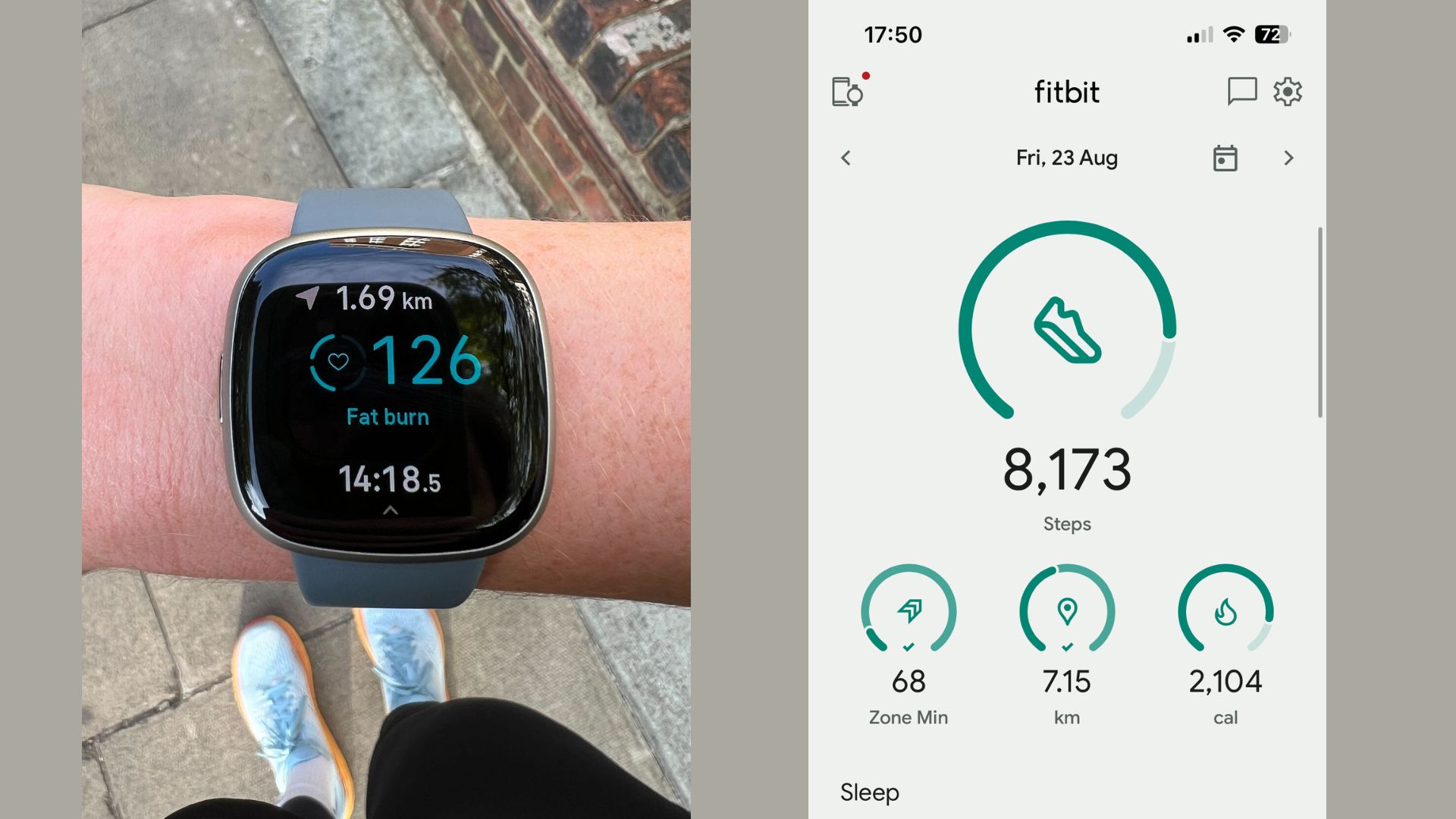
Both the Fitbit Versa 4 (pictured) and Sense 2 display heart rate zones during workouts, the data from which you can view in the Fitbit app (with free or Premium subscription.
Smartwatch features on the Fitbit Sense 2 vs Versa 4
Ever since Google bought Fitbit into the fold, the smartwatch features have improved tenfold across all the Fitbits - but particularly on these two watches. Now, on the Fitbit Sense 2 and Versa 4, you can access the entire suite of Google products from your wrist. That includes text, call, and calendar notifications, Google Maps, Google Voice Assistant, and Google Wallet, along with traditional smartwatch features like weather reports and alarms.
I was most impressed with the turn-by-turn directions on your wrist from Google Maps, which can also be used during a workout to direct your route on a walk or run. Having tested similar mapping features in the crème de la crème of running watches (like the Garmin Forerunner 265s and the Coros Pace 3), I was happy to see this.
Where the smartwatch features on the Sense 2 and Versa 4 fall short is in music playback. Neither offers integration with services like Spotify, but the Fitbit Versa 3 does (if you can find the device for sale anywhere). This means you can't control your music on your wrist, so you'll have to have your phone with you on a run or in the gym and take it out to switch songs if you like to listen to music during your workouts.
Winner: Both have the same smartwatch features
Health tracking on the Fitbit Sense 2 vs Versa 4
The health tracking features on the Fitbit Sense 2 set it apart from the Versa 4, with the newer watch boasting an integrated ECG app for monitoring heart rhythms, a continuous electrodermal activity (cEDA) monitor, and skin temperature sensors.
While this might sound like sensors you don't need if you're just looking to do more steps, they can be very useful for those who want to keep a closer eye on their overall health.
For example, a cEDA monitor measures changes in the skin's sweat, helping to deliver more accurate stress readings. Skin temperature sensors monitor internal changes, which also influence the watch's stress scores, but could also be used to flag early signs of a cold. An ECG app records electrical signals in the heart, which can help detect signs of an irregular heart rhythm.
None of these sensors should be used as a diagnostic tool, but they are certainly useful if you're looking to take a deeper look at your health.
The Fitbit Versa 4 doesn't have any of these features, focusing on fitness instead. But as a result, the Fitbit Sense 2 has a higher price tag to pay for these sensors.
Winner: Fitbit Sense 2 - by miles!
Display on the Fitbit Sense 2 vs Versa 4
The Fitbit Sense 2 and Versa 4 displays are almost the same - you'll find they both have a high-quality AMOLED, full-colour display at 336 x 336 pixels.
The only difference between the two is the standard pre-set watch face. On the home screen, you'll find the focus remains on core wellness pillars with icons displaying your stress score, heart rate, Active Zone Minutes (how many minutes in terms of intensity you've been exercising for that day) and sleep score, rather than classic fitness statistics like heart rate, steps, and calorie burn like on the Fitbit Versa 4.
However, you can customise your watch face as you like via the app with free and paid-for alternatives that can completely change the look and design of your watch face in just a few clicks and a sync. So, if you're considering one watch over the other based on the watch face design, know it's fully interchangeable.
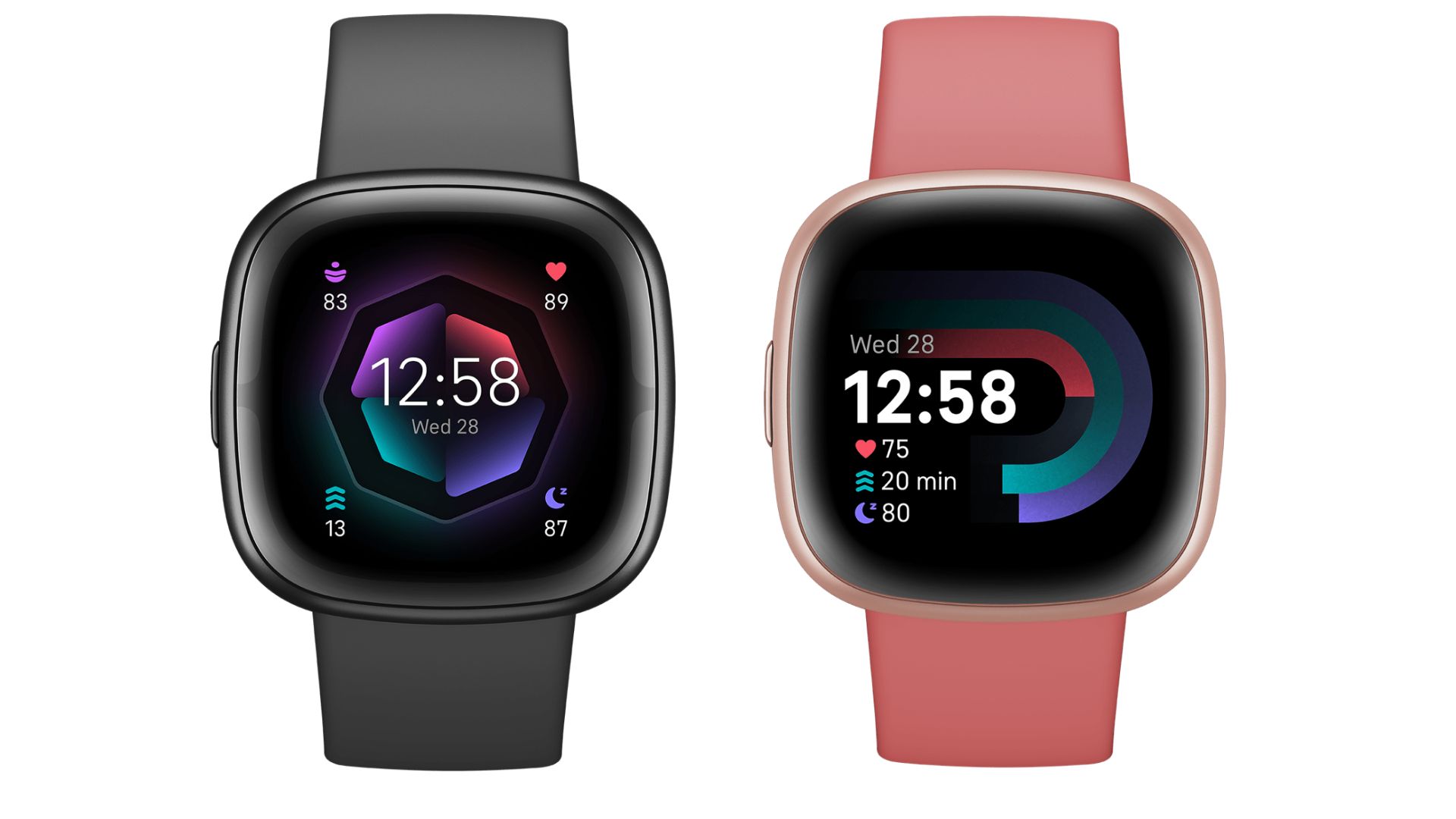
The default watch face on the Fitbit Sense 2 (left) and Versa 4 (right) is one of the major differences between the devices.
Battery life on the Fitbit Sense 2 vs Versa 4
One of the many reasons I love Fitbit devices is the battery life. The only good competitor to this the best Garmin watch, since the Fitbit surpasses Google's own range and Apple devices in battery life. With the Fitbit Versa 4 or Sense 2, you'll get six days of battery life minimum. In battery saving mode, I found mine lasted for longer than this.
The more you use GPS, the faster your battery will fade.
Even when I had enabled GPS tracking, which tends to drain battery life quickly, I found that both the Sense 2 and Versa 4 hit the six-day mark and even beyond when I used the watch without GPS functionality.
The only time the battery life didn't hold up was when I tried to track my 12-hour bike ride. By the 10th hour, both devices had run out of battery. However, this is a relatively extreme example, as most people won't need to track exercise for this long. If you do, consider weighing up Garmin vs Fitbit, as these premium running and cardio-focused fitness trackers hold up for longer.
Fitbit Sense 2 vs Versa 4: Which is better?
Overall, the Fitbit Sense 2 is a better smartwatch. It offers more precise GPS for fitness tracking and looks at health in more detail, bringing together advanced sleep insights with stress-tracking features and heart rate monitoring. For an all-singing-all-dancing fitness tracker, it's got to be this one.
However, the Fitbit Versa 4 is also a great option - plus, it's £50 less in some cases. While the Sense 2 is the superior tracker with its streamlined functionality, wellbeing focus, additional features, and smooth navigation, it is currently priced at around £180. Though this is down from the original RRP of almost £300, a price tag rivalling more advanced fitness trackers like the Apple Watch Series 9 and the Oura Ring.
If you have a health condition where extra features like the ECG may be useful, it may be worth the extra spend for you. If you prefer a fitness tracker with more streamlined functionality and care about precise GPS, then the Sense 2 will naturally be the better option for you, too - but it's all personal.
I used the Fitbit Versa 4 without any real problems for two months, and I'd happily use it again. However, I found that many of its best features are also contained in the Fitbit Versa 3, which is even cheaper still since the release of the newer model.
You may also be able to pick up one of the best Fitbit deals around and save on your pick of the bunch. During peak shopping times, such as Amazon Prime Day, Black Friday, and Christmas sales, you'll also find that these two models will be reduced.
Or, you might find that Fitbit smartwatches aren't for you at all and you'd be better suited to a fitness tracker like the Fitbit Inspire 3 or Fitbit Luxe.

Grace Walsh is woman&home's Health Channel Editor, working across the areas of fitness, nutrition, sleep, mental health, relationships, and sex. She is also a qualified fitness instructor. In 2025, she will be taking on her third marathon in Brighton, completing her first ultra marathon, and qualifying as a certified personal trainer and nutrition coach.
A digital journalist with over seven years experience as a writer and editor for UK publications, Grace has covered (almost) everything in the world of health and wellbeing with bylines in Cosmopolitan, Red, The i Paper, GoodtoKnow, and more.
You must confirm your public display name before commenting
Please logout and then login again, you will then be prompted to enter your display name.
